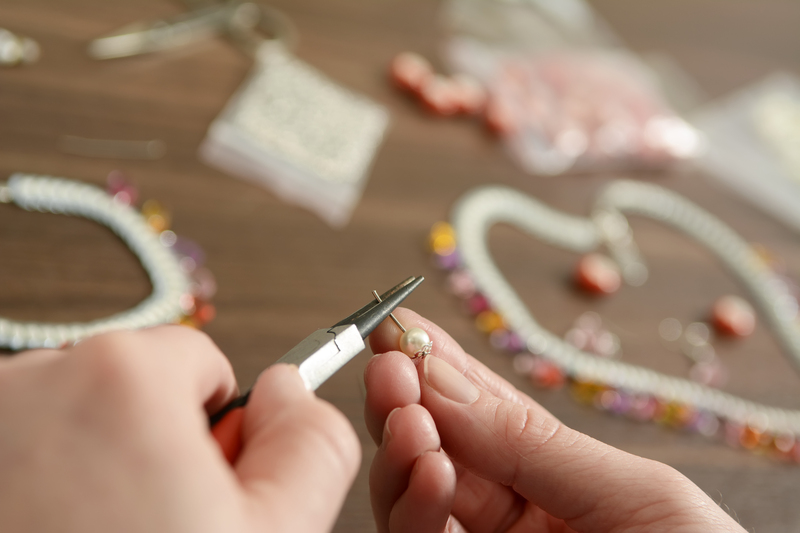How to Make Sure Your PPE Trash Doesn't Harm Wildlife
The widespread use of personal protective equipment (PPE) such as face masks, gloves, and face shields has been vital in combating health risks and viral transmissions. However, this surge in disposable PPE usage has led to an unprecedented increase in PPE waste. Alarmingly, when this PPE trash is not disposed of properly, it poses a significant threat to wildlife around the globe.
This comprehensive guide will explain how to dispose of your PPE waste responsibly, why it's crucial to prevent PPE pollution from harming animals, and which habits and policies can help mitigate the environmental impact of PPE trash on wildlife. Let's explore practical and effective ways to stop your PPE waste from becoming a hazard to nature.

Understanding the Threat: How PPE Trash Endangers Wildlife
Why Is PPE Waste Dangerous?
Most of us have seen used masks, latex gloves, or sanitizer bottles littering sidewalks, beaches, and parks. What we may not realize is that these items can travel far from their initial destination, ending up in rivers, forests, and oceans where they threaten countless animals. Improper PPE disposal increases the risk of suffocation, ingestion, and entanglement among wildlife.
- Entanglement Hazard: Animals, especially birds, turtles, and small mammals, can get tangled in the ear loops or stretchy materials of masks and gloves, leading to injury or death.
- Ingestion Risk: Mistaking PPE for food, many species ingest these materials, causing blockages, internal injury, or poisoning.
- Plastic Pollution: Most PPE is made from non-biodegradable plastics, which persist in the environment for decades, releasing microplastics and chemicals that poison food chains.
Real-World Consequences
Reports from conservation organizations have highlighted distressing incidents: seabirds strangled by mask loops, crabs hiding inside discarded gloves, and fish ingesting shredded masks. The wildlife impact of PPE trash is growing at an alarming rate: researchers estimate billions of masks are used globally each month, with a significant portion ending up as litter.
Best Practices for Disposing of PPE Waste
Your Role in Preventing Wildlife Harm
Preventing PPE trash from harming wildlife starts with each individual's choices. Here are the best steps for responsible PPE trash management:
1. Cut the Straps and Loops
The ear loops of masks and elastic bands of gloves are notorious for entangling animals. Before you throw away any disposable mask or gloves, _cut the straps or loops_ with scissors.
- Why It Matters: Prevents birds, fish, and mammals from getting trapped.
- How to Do It: Use household scissors to snip through both sides of mask ear loops and any elastic glove bands.
2. Bag Your PPE Trash
Never throw used masks or gloves loose into public bins or the environment. Always seal used PPE trash in a bag before disposal. This reduces the chance of items being blown away or picked up by animals.
3. Use Designated PPE Disposal Bins
Some cities and communities now offer special bins for PPE waste. If available, always use these bins. These containers are designed to reduce contamination risk as well as environmental escape of waste.
- Look for: Clearly labeled PPE or hazardous waste bins at hospitals, pharmacies, and community centers.
- If Unavailable: Use a double-bagging method and dispose of PPE in your regular household trash--not in recycling bins.
4. Never Flush PPE Items
Do not flush masks, gloves, or wipes down the toilet or into drains. These can clog sewer systems and, worse, travel to waterways, where they threaten marine life.
5. Educate Your Community
The more people who know how to dispose of PPE properly, the fewer risks for animals. Share information with friends, family, and neighbors--especially children--about the consequences of littering PPE trash and what steps everyone should take.
Alternatives to Single-Use PPE: Eco-Friendly Solutions
Reducing Your Environmental Footprint
Wherever safe and possible, choose reusable PPE options. Not only does this help conserve resources, but it also dramatically lowers the amount of PPE waste entering the environment.
- Reusable Cloth Masks: Opt for masks made of breathable, washable materials. After use, launder your mask and reuse it.
- Washable Gloves: Consider using reusable rubber or fabric gloves for cleaning and handling non-toxic items.
- Face Shields: Durable face shields can be sanitized and reused repeatedly, unlike disposable visors or shields.
Tip: Reserve single-use PPE for high-risk environments or healthcare settings. For everyday activities where guidelines allow, eco-friendly options help protect both you and the natural world.
How to Clean and Sanitize Reusables
- Wash cloth masks with hot water and detergent after each use. Dry thoroughly.
- Sanitize reusable gloves and face shields with soap or alcohol-based wipes.
PPE Recycling: Myth or Reality?
You may wonder: Can PPE be recycled? Unfortunately, most disposable masks and gloves cannot be recycled through standard municipal programs. The combination of mixed plastics and potential contamination poses challenges.
Specialized Recycling Programs
Some innovative companies and environmental groups now offer PPE-specific recycling. These include:
- Collection Points: Drop-off boxes at pharmacies or grocery stores for masks and gloves.
- Mail-in Programs: Specialized services where you ship PPE in sealed bags to dedicated processing centers.
Before using these services, check their guidelines for what types of PPE they accept and ensure items are properly sealed and labeled.
What To Do If You See PPE Litter in Nature
Be a Wildlife Protector
If you spot discarded masks or gloves while outdoors, take safe action to prevent wildlife from interacting with them:
- Use gloves or trash-grabbing tongs to pick up PPE litter.
- Seal items in a trash bag--do not touch your face until you have washed your hands thoroughly.
- If possible, cut the loops before disposal.
- Dispose of collected PPE trash following guidelines outlined above.
Always prioritize your own safety when handling used PPE. Do not pick up medical waste that appears hazardous.
The Role of Policy and Innovation in Tackling PPE Waste
Government and Industry Responsibility
While individual action is crucial, broader changes are needed to address the impacts of PPE trash on wildlife:
- Legislation: Many regions are enacting rules on PPE disposal, such as fines for littering and requirements for corporate responsibility.
- Public Awareness Campaigns: Educational programs in schools, parks, and online to inform people about the risks of PPE waste to animals.
- Innovation: Scientists are developing biodegradable masks and gloves made from plant-based materials, which break down safely in nature.
Supporting Conservation Groups
- Donate to or volunteer with organizations working to clean up PPE pollution.
- Support legislation and policies that promote sustainable PPE options and sound waste management.
Key Takeaways: How to Prevent Your PPE Trash from Harming Animals
- Always cut straps and loops before disposal to stop entanglement.
- Bag and seal PPE waste--never leave it loose or littered.
- Use reusable PPE where safe and practical to minimize disposable waste.
- Participate in special recycling programs for PPE if available.
- Educate and encourage others to take responsibility for PPE waste.
By following these steps, you can greatly reduce the dangers PPE trash poses to wildlife and help build a cleaner, safer world for all species.

Frequently Asked Questions About PPE Waste and Wildlife
Can I recycle used masks and gloves in my home recycling bin?
No. Most municipal recycling systems do not accept used PPE because of contamination risks and plastic types. Always dispose of PPE in regular waste, unless a specialized recycling program is available.
Are biodegradable masks effective and safe for the environment?
Many new products use plant fibers or bioplastics to create biodegradable PPE. They are designed to break down more quickly in the environment, but their safety and effectiveness in all settings are still being evaluated. Whenever possible, choose certified, compostable PPE for lower environmental impact.
How can I spread awareness in my community?
You can share information through social media, organize local clean-ups, post flyers, and talk to community leaders about the importance of proper PPE disposal to prevent wildlife harm.
Conclusion: Protecting Wildlife From PPE Pollution Is Everyone's Responsibility
The battle against global health emergencies must not come at the expense of nature. By understanding how PPE trash affects wildlife and adopting smart disposal habits, you can become a steward of the environment--protecting not just yourself and others, but the entire web of life.
Let's work together to ensure that PPE pollution does not become a lasting legacy--one mask, one glove, one positive action at a time.